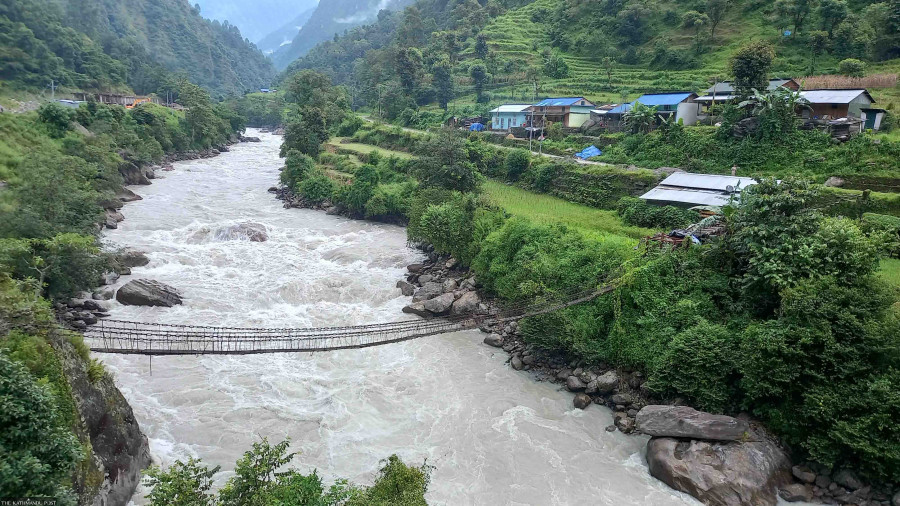Money
Two Chinese firms shortlisted for Tamakoshi V project construction
The 99.4MW project does not need its own dam, because it takes its water directly from the tailrace tunnel of the 456MW Upper Tamakoshi Hydroelectric Project.
Kedar Shiwakoti
Two Chinese companies have been shortlisted to construct the civil component of the Tamakoshi V hydropower project.
The proposed 99.4-megawatt project is a run-of-river hydroelectric plant designed to be operated as a lower structure of a cascade. It does not need its own dam, because it takes its water directly from the tailrace tunnel of the 456MW Upper Tamakoshi Hydroelectric Project.
Sinohydro Corporation, which constructed the civil component of the Upper Tamakoshi, and China Gezhouba Group Corporation are the final shortlisted companies. The project will pick one of them.
“We have started preparations to award the contract later this week,” said Binod Bhandari, chief of the project. The construction is expected to begin at the end of the current fiscal year.
The bid was invited on July 25 last year.
According to the project, the estimated cost is Rs18.5 billion. The project completion period is four years.
Of the total investment, 30 percent will be through equity and 70 percent through a loan.
“The project has already signed a memorandum of understanding with the Employees Provident Fund for an investment of Rs13 billion,” said Bhandari. “It will, however, take time for the final agreement.”
The Upper Tamakoshi project has proposed investing 10 percent in the project while there will also be investment from the locals.
The project will be constructed under the engineer procurement construction (EPC) model, according to Bhandari.
Under an EPC contract, a single contractor takes responsibility for all components like design, engineering, construction and procurement. The contract binds the contractor to deliver the project by the stipulated time and at the predetermined price regardless of any possible cost overruns.
The project will be carried out in two packages—civil and electro-mechanical.
Bids for the electro-mechanical work will be invited in the second package.
The power produced from the project will be fed into the 220kV transmission line of the Upper Tamakoshi Project.
The underground powerhouse will be made at Suri Dobhan in Bigu Rural Municipality-3.
Currently, the project is building houses for employees of the project as well as the main offices.
The project may worry India, the main buyer of Nepal’s electricity.
As Nepal’s private sector plans to sell electricity in India’s power exchange market, its southern neighbour communicated to the independent power producers last year that they must ensure there will be no Chinese components in their hydropower projects.
The Procedure for Approval and Facilitating Import/Export (Cross Border of Electricity) by the Designated Authority introduced by the Central Electricity Authority under India’s Power Ministry has imposed restrictions on power trading if there is investment from a country generating electricity with which India shares a land border and the third country sharing a land border with India, which does not have a bilateral agreement on power sector cooperation.
Though this procedure does not directly talk about barring electricity with Chinese investment from entering India, Nepali officials and private sector representatives believe the provision is aimed at China-invested projects.
Recently, Nepal Electricity Authority Managing Director Kul Man Ghising requested New Delhi to reconsider its stand on buying electricity from Nepal’s largest 456MW Upper Tamakoshi Hydroelectric Project.




 12.12°C Kathmandu
12.12°C Kathmandu














